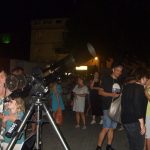In the early hours of Monday morning, the total lunar eclipse will be visible from Croatia. The phenomenon occurs when the Moon enters the shadow of the Earth, becoming red and brown in colour, the Croatian Astronomical Association announced, reports Jutarnji List on January 20, 2019.
Due to the bad weather, public observations with telescopes have been organised just in Split and Mali Lošinj. If the weather conditions are favourable, the Mosor Star Village plans to host the public observation with telescopes in Split, near the Spinut port, between 4.30 and 7.30 am, while the Leo Brenner Astronomical Society will do the same at the waterfront in front of the Apoxyomenos Museum in Mali Lošinj.
The lunar eclipse occurs when the Moon enters the Earth’s shadow and is then illuminated by the red light which disperses while travelling through the Earth’s atmosphere. The total lunar eclipse happens when the whole Moon enters the shadow of the Earth; when just one part of the Moon’s disc enters the shadow, that is a partial eclipse.
During a total eclipse, the Moon never enters the total darkness, but is seen in red and brown colour, which is why the phenomenon is sometimes called the “blood moon.” That is caused by the refraction of light in the Earth’s atmosphere, which in this case acts as a prism. The Earth’s atmosphere mostly scatters the blue light (which is why the sky is blue during the day), while the red light that is not scattered completely continues its way to the Moon and makes it red.
In Croatia, the beginning of the partial eclipse will take place at 4.33 am, while the start of the total eclipse will occur at 5.41 am; the maximum of the total eclipse will take place at 6.12 am, and it will end at 6.43 am.
This eclipse will be the only total lunar eclipse in 2019 and will be visible from the entire western hemisphere, Europe and the western parts of Africa, as well as from northern Russia, announced NASA, meaning it could, with favourable weather conditions, be potentially observed by some 2.8 billion people around the world.
It will be best seen from North America, NASA says, adding that as a bonus the eclipse will occur during the supermoon phase when the Moon is closest to the Earth which makes it appear bigger and brighter.
More news on the astronomy in Croatia can be found in the Lifestyle section.
Translated from Jutarnji List.








